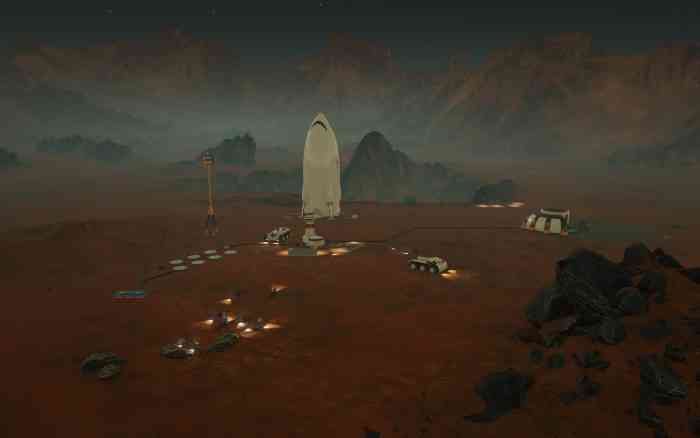Surviving Mars is a Casual Colony Sim with a Hidden “Mystery”
I recently had a chance to quickly try out the new colony sim from Paradox Interactive, Surviving Mars. In this sandbox sim, players can craft their custom colonization experience from designing a sprawling Martian civilization to recreating the Matt Damon sci-fi classic (too early to call it a classic? It feels like a classic). Since the normal playtime to build a multi-domed colony can take on the order of hours, I got to play through several save files that represented different stages of colony development.
The initial phase of the game actually starts out with choosing how to set up your mission to Mars. In the quick demo I played through I just went through the defaults, but you can choose which country’s space program you want to sponsor you, how much of each material to take, and your initial colony population. Once, you have your program funded and resourced, you choose a landing site on the surface of Mars. Similar to many other colony sim games, your starting location will determine how many resources are available to you and the likelihood of natural disasters. If you happen to be fairly Mars savvy and can spot Mons Olympus from the site selection menu, it will actually register as the famous Martian landmark. Once you determine the ideal landing site for your mission, the real colony sim starts.
Surviving Mars progresses like a real colonization mission would play out in the fact that drones are doing all of the initial building and resource gathering. You start with some building materials but will quickly realize that you need more raw materials to really get a colony up and running. Based on the demo I played there seems to be a fairly default build order early on: build a concrete plant to build a power plant to power the drone hub. After that it’s fairly open what you can do next in terms of logistical infrastructure; however, if you want to bring humans to you colony at some point you’ll need a habitat along with air and water to survive. Once humans arrive you can assign them to various jobs like farming for food or research for upgraded buildings. As of now, that about wraps up the core game loop of survival.

This wasn’t covered much in the demo I played, but there will be a sci-fi “mystery” element that becomes apparent after several hours of play, so maybe that’s where the great challenge will be. From what I played though, the basic sandbox loop didn’t present much of a challenge when trying to expand the colony. It seemed fairly easy to build up a colony that could be self-sufficient and robust enough to weather any catastrophic event. That being said, what I found most impressive was the level of detail in the simulation. Some elements of Surviving Mars are game-ified so as players can enjoy the simulating a colony over the course of hours and not real years, but many of the physical interactions are pulled straight from the textbooks. Solar panel efficiency will change based on your latitude, oxygen will disperse through biospheres at a non-instantaneous rate, and even the colonists will develop traits based on their activities.
Overall it looks like it’s shaping up to be a great sandbox colony sim that I’m excited to see progress.

